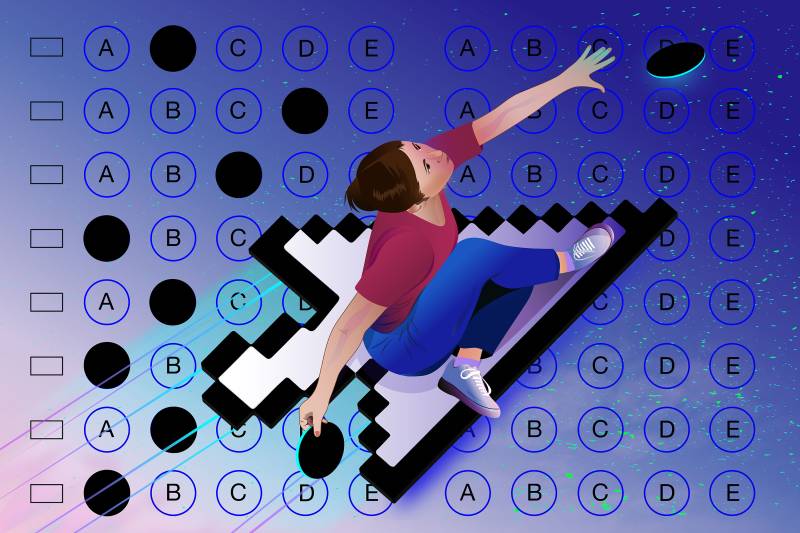“We’re so used to being on our laptops, like it’s something we do on the regular, in every class.”
Perez has been prepping for the online version in school, using test prep material from CollegeSpring, a nonprofit that partners with high school teachers.
She says she’s still nervous and anxious about the test because she feels a lot of pressure to do well. “It’s a very important test,” she says. “It dictates what’s going to happen for your college life.”
She’s taking the test on Tuesday morning at her high school using school laptops.
This isn’t the first time the College Board has administered a digital exam. In 2023, international students took a digital-only SAT, and a digital-only PSAT was given to younger U.S. high school students last fall.
Students will take the digital exam on Bluebook, an app built in-house by the College Board. Schools were given time ahead of testing dates to download the app onto their devices. Internet access is key to starting the test, though Rodriquez says it requires very little bandwidth during the test and is designed to autosave locally, so students won’t lose work or time if they lose their internet connection.
The SAT and ACT still hold power in admissions
All this comes as the relevance of the SAT and ACT, another college entrance exam, is being called into question in the college admissions process. More than 1,800 U.S. colleges are not requiring a test score for students applying to enroll in fall 2025, according to the National Center for Fair & Open Testing. But in recent weeks, some elite private colleges, including Brown University and Dartmouth College, have reinstated the test requirement, saying it provides helpful context for the admissions process.
Perez would be the first in her family to go to college in the U.S. She says, “I know a lot of schools say that they’re test optional,” but when she looked up colleges she was interested in, she found they still listed average SAT scores on their websites.
“So you do have to care,” she says, “because [colleges] might still be looking at them, even if they say they’re test optional.”
Even with many schools trying to de-emphasize the exams, Rodriquez, of the College Board, says the SAT can still be an important piece of a larger admissions puzzle.
“[The SAT] can give any student a way to show what they’ve learned in a standardized way, and that’s especially important when other parts of the college application, things like extracurricular activities and essays, are more easily influenced by parental wealth.”
The SAT and ACT are also still deeply ingrained in the American high school experience. Many states require one of the exams to graduate, and several states have contracts with the College Board to offer the test during the school day for free to their students.
Before this new digital format, the SAT had already gone through several changes. In 2014, the College Board revealed it would drop its penalty for wrong answers, make the essay portion optional and remove the obscure vocabulary section. And in early 2021, the organization announced it would discontinue the optional essay component of the SAT, as well as the subject tests in U.S. history, languages and math, among other topics.
Copyright 2024 NPR. To see more, visit https://www.npr.org.9(MDAxOTAwOTE4MDEyMTkxMDAzNjczZDljZA004))

9(MDAxOTAwOTE4MDEyMTkxMDAzNjczZDljZA004))
